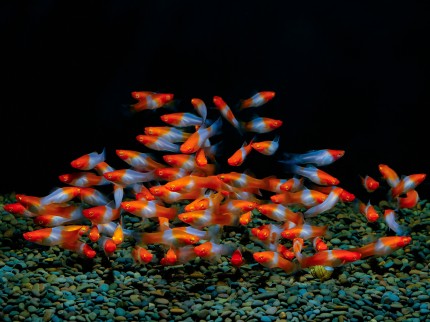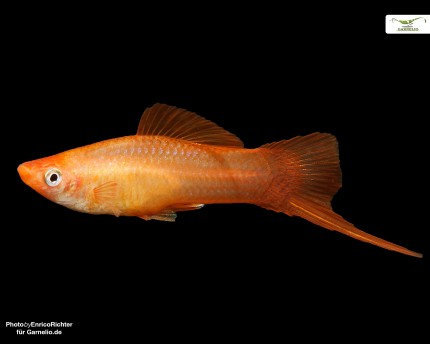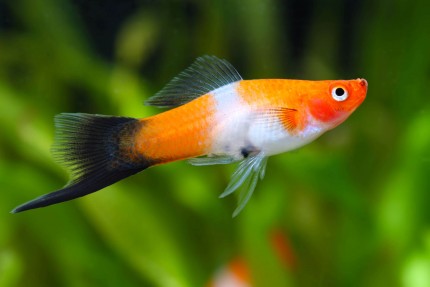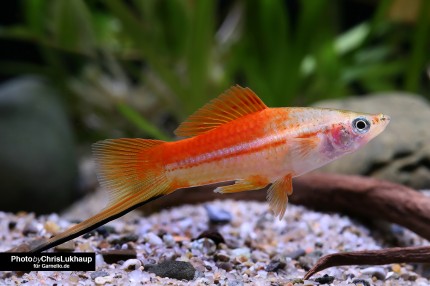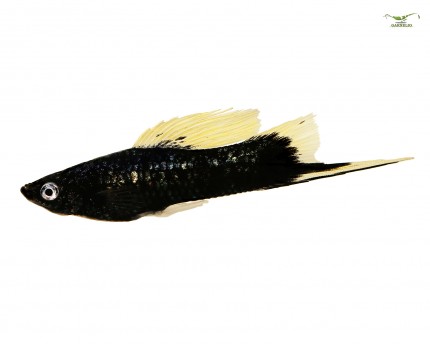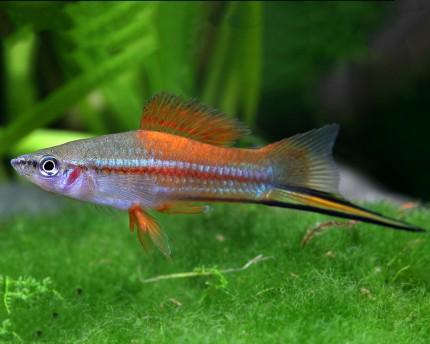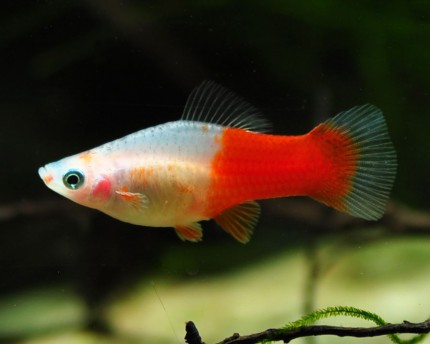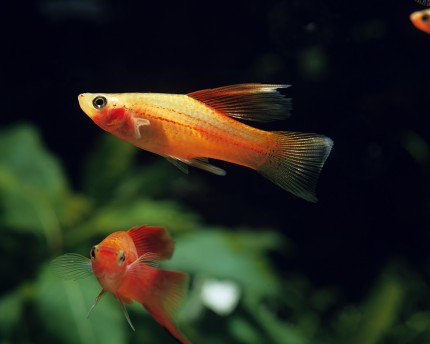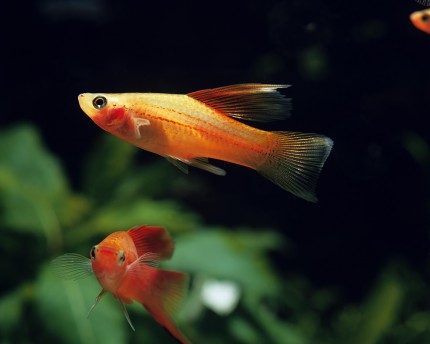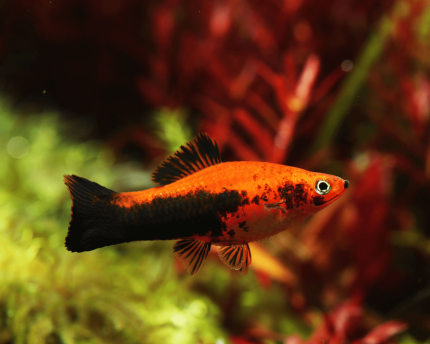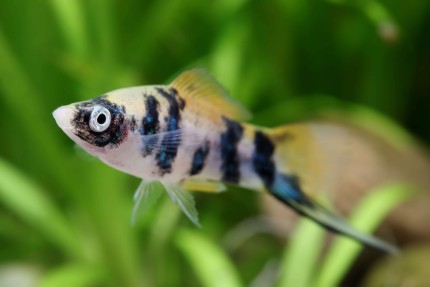Swordtails in nature
The swordtails, Xiphophorus helleri, belong to the live-bearing toothcarps or Poeciliidae, like guppies and platies, like mollies or also sailcarps.
Swordtails are rather greenish to silvery in nature, but in the aquarium you can find bright red and orange tones, black, green, colorfully striped or even spotted fish. Swordtails live in nature in Central America and there mainly in freshwater in plant-rich waters with rather more current and rather hard water.
The colorful ornamental fish grow up to 12 cm, with females and males reaching the same body length. Swordtails are very hardy if the environment is suitable, and they are also quite eager to reproduce. They have a superior mouth, which indicates that they tend to stay at the surface and like to eat approach food there, for example. The differentiation of the sexes is super simple with the swordtail: The males have not only a ventral fin, the Gonopodium, converted to the sex organ, but with them the lower ray of the tail fin is strongly extended and forms the - usually very beautifully and strikingly contrasting colored - sword. In male Lyra swordtails the upper fin ray is also strongly elongated.
Like all livebearers, swordtails are very sociable group fish that need the company of at least 10 conspecifics and thus also a correspondingly large aquarium.
Swordtails in the aquarium
An aquarium for Xiphophorus helleri should hold at least 80 l. Swordtails are closely related to and interbreed with platies and parrot platies, so these ornamental fish should not be socialized with each other. Swordtails feel comfortable in a well planted aquarium with hard or medium hard water. The temperature may be 20 to 28 degrees. They can be well socialized with large shrimps, and also in fish company of, for example, catfish or characins, which also like hard water, they feel very well - swordtails are definitely suitable for the community aquarium.
Swordtail varieties and fin shapes
The Swordtail Xiphophorus helleri is available in many beautiful color variations. Here in the Garnelio online store you can buy different color forms of the Swordtail, which you can also mix in the aquarium, if you do not want to breed pure colors: colorful striped neon swordtail, the bright orange-red color form Marygold, the black swordtail with the bright fins, the classic red variety, the wild form somewhat similar green swordtail, red white pineapple swordtail , the pied Koi Sanke, the beautiful Lyra swordtail with the special fin shape, the classic red Wagtail with the black tail, ...
Breeding swordtails
Swordtails are live-bearing, which means the eggs mature in the mother's abdomen and the egg cases burst during the birth, so the baby fish is born alive. Swordtails release up to 150 fry per litter, but eat their own young, so by no means do all fry grow up. You can leave them in the densely planted aquarium and raise them there together with the older swordtails. After a certain size, the older fish will no longer chase the baby swordtails.
Feeding of swordtails
Swordtails need a mixed diet of plant and animal components. They like to eat algae in the aquarium, love live food and frozen food of suitable size, but also take soft vegetables like peeled tomatoes or pumpkin chips very readily. Our NatureHolic Guppyfeed is also ideal for swordtails, as for all live-bearing toothcarps. The soft consistency protects the vulnerable mouth, and our well thought-out delicious recipe together with the high quality ingredients brings a high acceptance. Best to order now! When you want a little variety now and then: Our new NatureHolic Protein Worms and the NatureHolic Algae Worms are perfect treats for all live-bearing toothcarps and thus of course also for swordtails.
Conclusion
If you want to outfit a larger aquarium with impressively colored, interestingly shaped and great to watch fish, give Swordtails a second look. Ideal for hard water aquariums, these live-bearing carpets do great in a planted aquarium. Swordtails are lively aquarium companions, curious and hardy. Ideal for beginners with large tanks, also ideal for community aquariums. In our Garnelio online store you can buy a large, colorful selection of these popular aquarium fish from the family of viviparous toothcarps for your aquarium.

